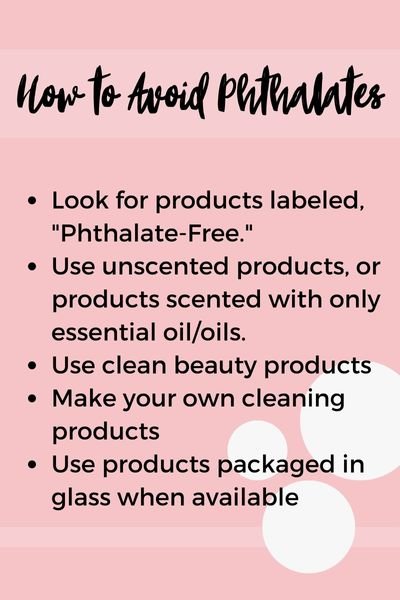Could something as seemingly innocuous as the plastic in your shower curtain or the scent in your favorite lotion pose a hidden threat? The widespread presence of phthalates, chemicals that soften and enhance plastics, is increasingly linked to a range of health concerns, demanding our attention and a deeper understanding of their potential impact.
These ubiquitous compounds, also known as phthalate esters, are esters of phthalic acid, and they've become an inescapable part of modern life. From the toys children play with to the food we consume, these chemicals are pervasive. They are added to plastics like polyvinyl chloride (PVC) to make them flexible, but they are also used as solvents and fixatives in cosmetics, fragrances, and personal care products. Their ability to enhance the performance of materials has made them a cornerstone of industrial manufacturing, but this widespread use has raised significant concerns about their impact on human health and the environment. The very qualities that make phthalates useful, their ability to leach out of products and enter our bodies, are now the source of considerable scrutiny.
| Category | Details |
|---|---|
| Chemical Name | Phthalate Esters (Esters of Phthalic Acid) |
| Primary Function | Plasticizers (make plastics more flexible and durable), Solvents, and Fragrance Carriers |
| Common Applications | PVC plastics (e.g., shower curtains, flooring), Cosmetics (e.g., nail polish, perfumes), Personal care products (e.g., lotions, shampoos), Food packaging, Toys, Medical devices |
| Health Concerns | Endocrine disruption, Reproductive and developmental issues, Increased risk of chronic diseases (e.g., heart disease), Potential links to certain cancers |
| Regulation | Regulated as toxins in some countries; restrictions in the use of certain phthalates in children's products and cosmetics |
| Exposure Sources | Inhalation (from fragrances), Ingestion (from food packaging), Dermal absorption (from cosmetics) |
| Environmental Impact | Can leach into the environment and contaminate soil and water; potential harm to wildlife |
| Research Focus | Ongoing studies to assess the long-term health effects and safe exposure levels |
| Precautionary Measures | Choose phthalate-free products, Reduce use of plastics, Proper ventilation, Review ingredient labels carefully, Especially when dealing with children's product. |
| Reference Website | U.S. Environmental Protection Agency (EPA) |
The alarming reality is that phthalates are everywhere. They are in the air we breathe, the food we eat, and the products we use daily. This pervasive exposure has led to mounting concern within the scientific and medical communities. Multiple studies have illuminated potential health risks, especially for vulnerable populations like pregnant women, infants, and children. The very nature of phthalates, their ability to leach out of products and enter the human body, poses a significant challenge. They can be absorbed through the skin, inhaled from the air, or ingested through contaminated food and water, creating a constant exposure pathway.
The concern isn't new; the effects of phthalates on human health have been an ongoing area of research for years. The key issue is endocrine disruption. Some phthalates mimic or block hormones, potentially leading to developmental, reproductive, and other health problems. This disruption is particularly worrying during critical periods of development, such as pregnancy and early childhood. Research suggests that exposure during these times can have long-lasting effects on reproductive health, cognitive development, and immune function. The evidence is accumulating, with studies increasingly linking phthalate exposure to early death from heart disease and other chronic illnesses.
The impact of phthalates, however, is not uniform across the population. Vulnerable groups, including pregnant women, infants, and children, are particularly at risk. During pregnancy, exposure can affect the developing fetus, potentially leading to birth defects or developmental delays. Children, due to their higher surface area-to-volume ratio and behaviors like putting objects in their mouths, are also more susceptible to phthalate exposure. These vulnerabilities underscore the need for heightened awareness and precautions.
The ubiquity of phthalates makes complete avoidance a challenge. The first step in mitigating your exposure is understanding where these chemicals are found. Start by examining product labels. Look for the term phthalate-free on cosmetics, personal care items, and food packaging. Choosing products made from safer materials, such as glass or stainless steel for food storage, can reduce exposure. Airing out new plastic products and ventilating your home can also help to minimize inhalation. Washing hands frequently and encouraging children to do the same, especially after handling plastic toys, is essential.
Beyond personal choices, policy and regulation play a crucial role. Many countries and regions have already implemented restrictions on certain phthalates, particularly in products intended for children. These regulations often focus on limiting the use of specific phthalates in toys, childcare items, and cosmetics. The effectiveness of these regulations will depend on ongoing monitoring, enforcement, and updates based on the latest scientific findings. A proactive approach that prioritizes public health and environmental safety is essential.
The scientific understanding of phthalates is evolving, and ongoing research will continue to refine our knowledge of their effects. Studies are exploring the long-term health impacts of different types of phthalates and investigating the mechanisms by which they disrupt biological processes. This research is crucial to identifying safe exposure levels, developing effective prevention strategies, and informing public health policies. As the body of evidence grows, so does the need for proactive measures. The information is available, it’s time to take appropriate measures to safeguard your health.
The battle against phthalates is not simply about eliminating these chemicals. It is about making informed choices. It is about demanding safer products and advocating for responsible manufacturing practices. The journey to minimize exposure is a shared responsibility, one that calls for both individual vigilance and collaborative action.



